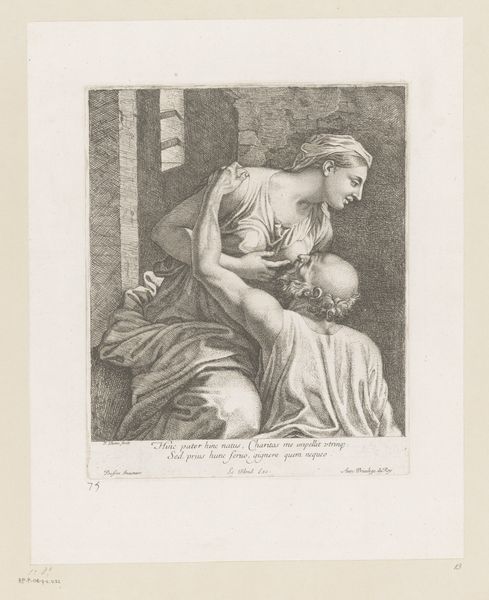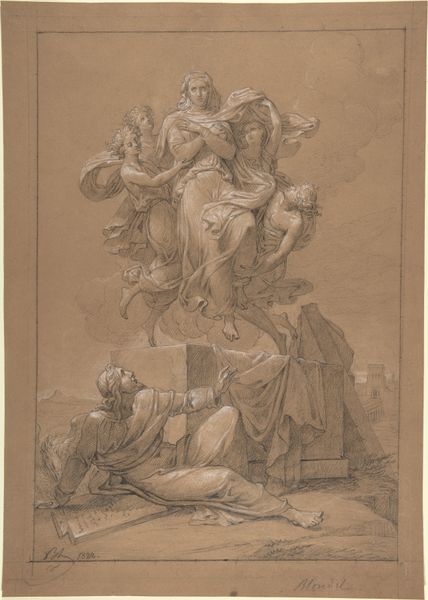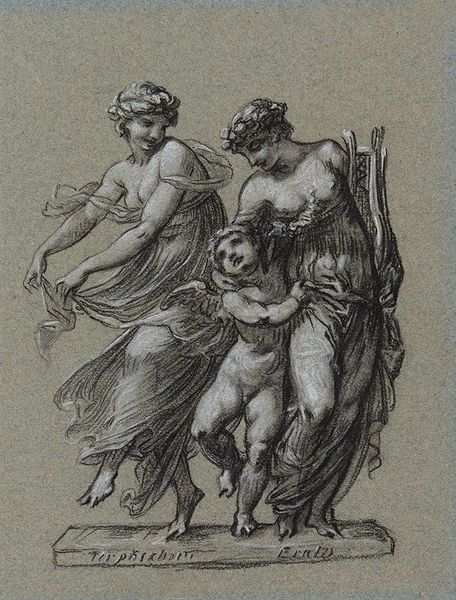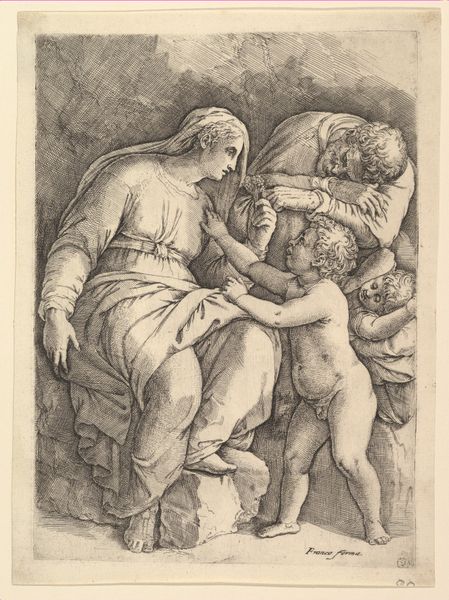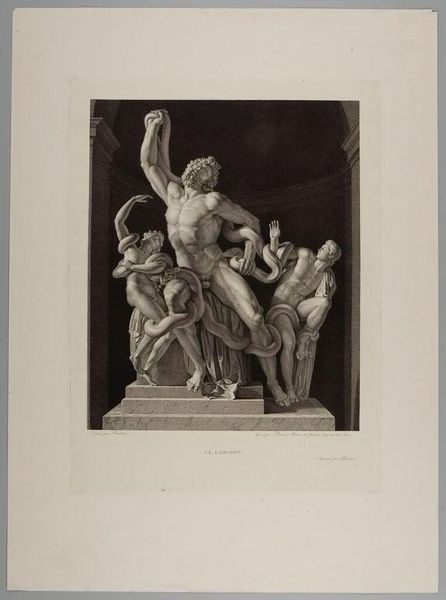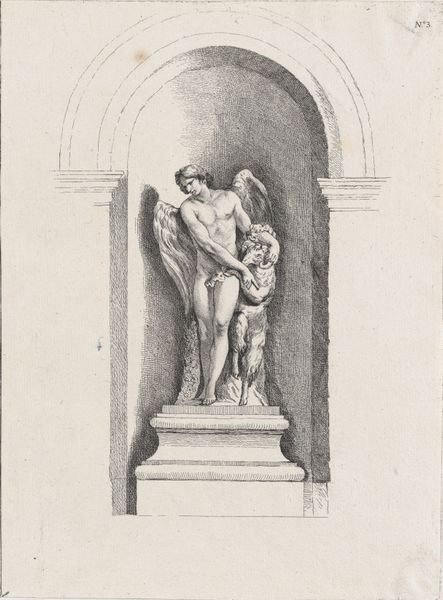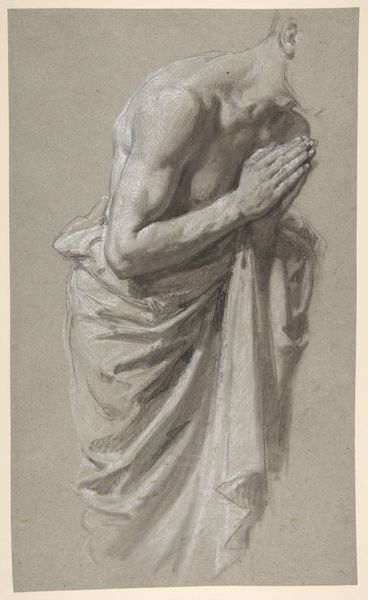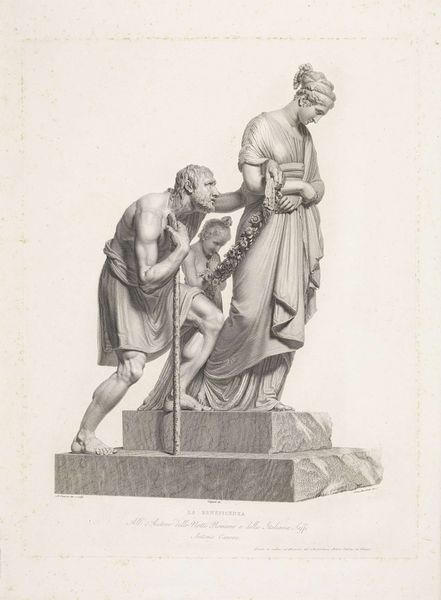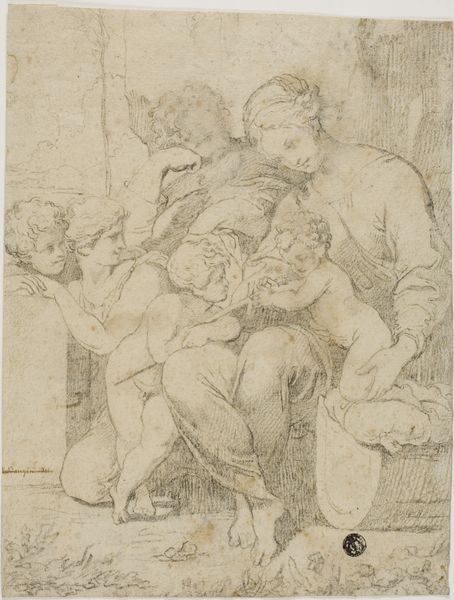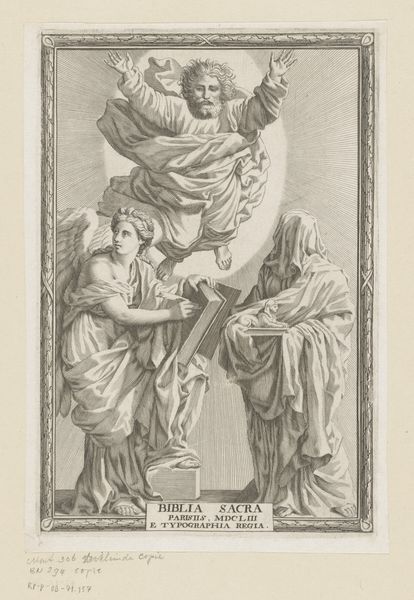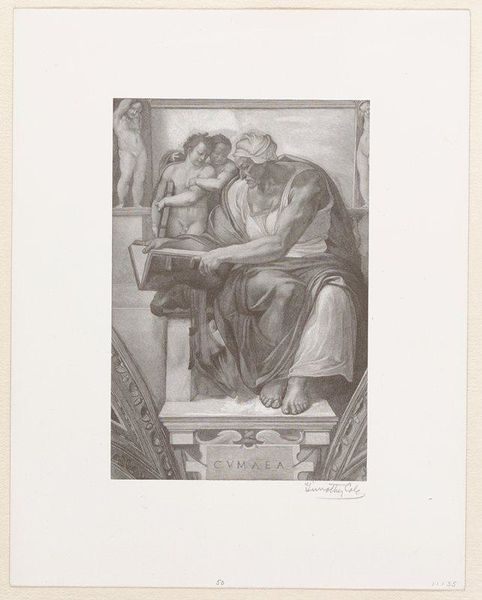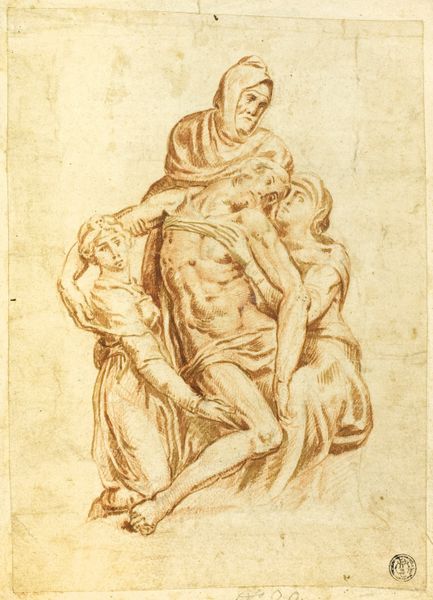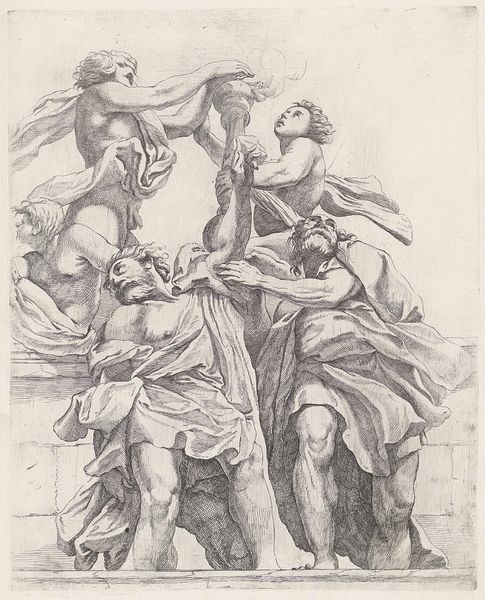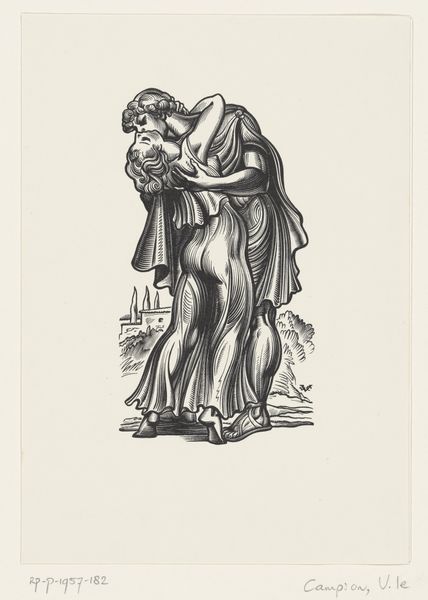
drawing, pencil, graphite
#
portrait
#
pencil drawn
#
drawing
#
pencil sketch
#
classical-realism
#
charcoal drawing
#
figuration
#
pencil drawing
#
pencil
#
graphite
#
portrait drawing
#
history-painting
#
academic-art
#
graphite
Dimensions: height 343 mm, width 243 mm
Copyright: Rijks Museum: Open Domain
Curator: Here at the Rijksmuseum, we have a drawing by Louis Royer entitled "Beeldengroep voorstellende De Liefde," which translates to "Sculptural Group Representing Love." It was created sometime between 1803 and 1868. Editor: The initial feel is very soft, a sort of muted, quiet tenderness radiating from it. It's rendered with such delicacy, you know? A mother figure and children, a sculptural model, maybe? I am drawn to the gray pencil sketch; it presents intimacy but at a remove, an imagined tableau vivant from the studio. Curator: Precisely. Royer, a sculptor himself, likely created this graphite and pencil drawing as a study for a larger sculptural piece. It allows us to peek behind the curtain, to consider his artistic process in conceiving this scene of maternal love. Editor: What strikes me, though, is that even in this preliminary sketch, Royer seems fascinated by the weight and volume, but not just physical. You feel the tug of the children and that push and pull of reliance... You can imagine Royer in his studio, surrounded by materials, tools and models and light. Curator: It’s so true! I see the intersection of academic precision and true, tender sentiment. The classical drapery of the mother contrasts with the children's bare, almost rowdy affection. Is that the academic classicism holding this together as much as love? Editor: I think this image highlights the physical labor that makes the piece whole. Consider what he’s doing as well; he’s choosing a classic, almost allegorical subject - the humanization of the pure and eternal theme that allows even a cold hard thing to show this “love.” This reminds me that artists’ labor makes such abstractions tangible and human. Curator: Well, in closing, Royer, through simple materials and graceful lines, shows a tender picture of a group that may offer different levels of appeal and attraction depending on who stands before it. Editor: And by seeing Royer's vision from the workshop, hopefully we can reconsider how process and subject make art objects vibrate beyond skill and expectation.
Comments
No comments
Be the first to comment and join the conversation on the ultimate creative platform.
